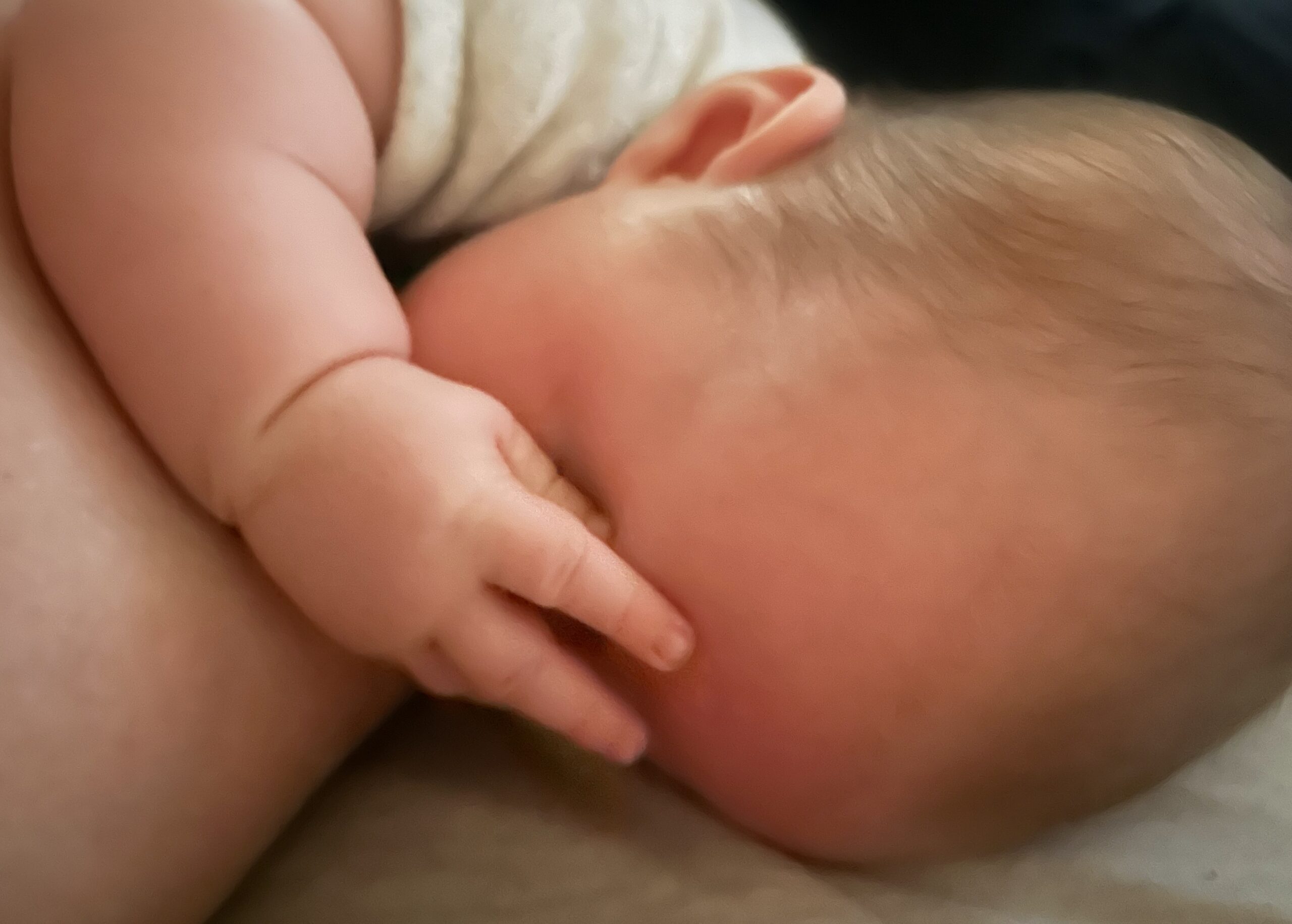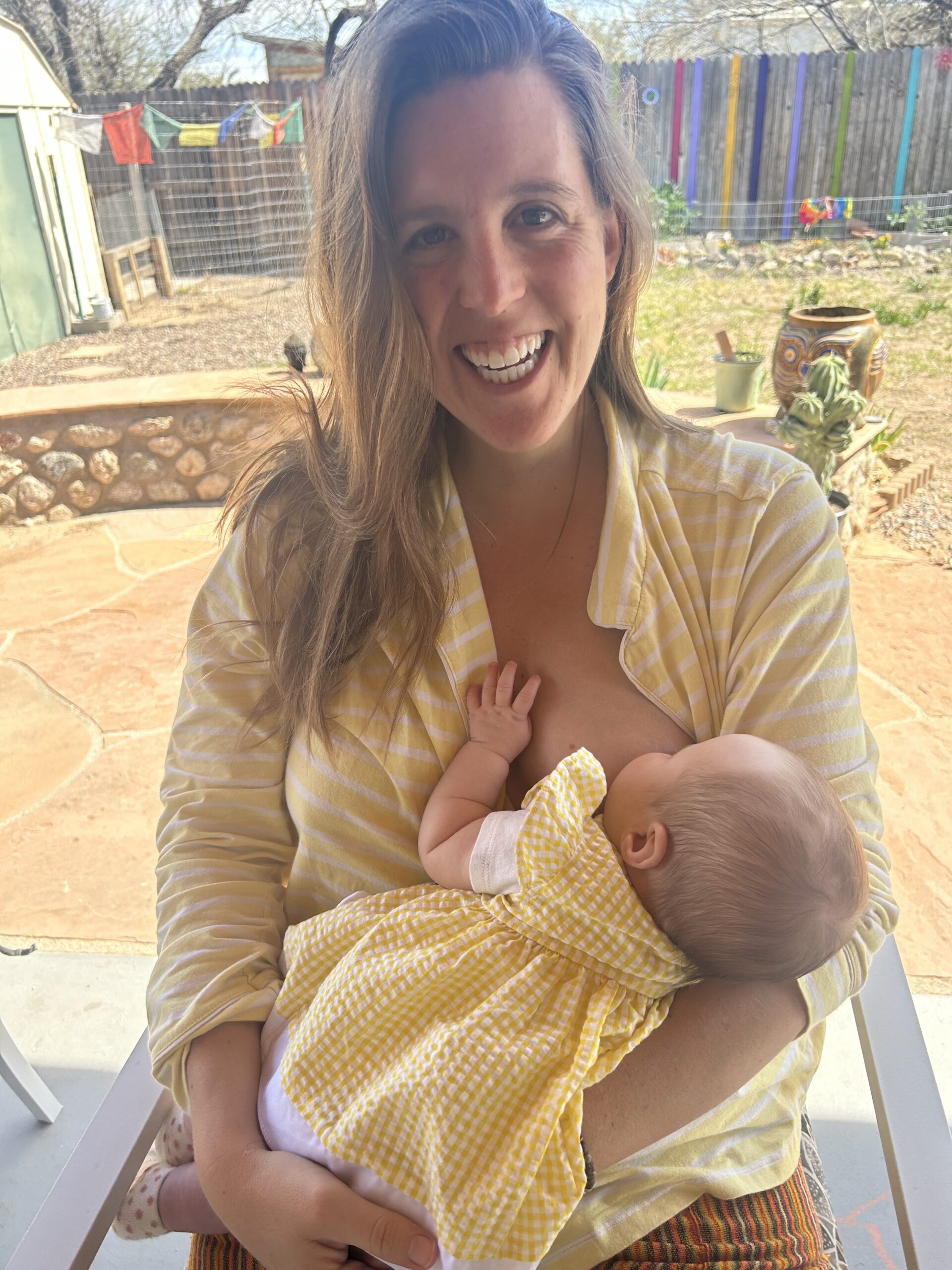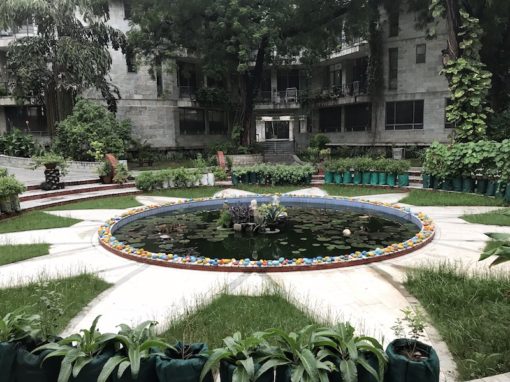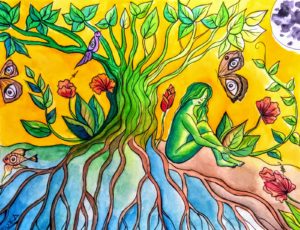When my contractions started at 9:15 that Tuesday night, the knowing hit me immediately. This, this is it. This is what I’ve read about; this is what I’ve talked about with other women and now, it is known in my body. It began with the innocence of an introduction: a wave vibrating from the ground through my feet and moving upwards; a shivering in my body in recognition that within me, change was happening. The first contraction came with the invitation to surrender, to breathe and become. After forty-five seconds, it disappeared, as if it was reabsorbed back into the ether, leaving through the top of my head. There was a shiver as my body sighed itself sloppy, releasing the shape of tightness. Curious at first, I told Frank; I texted friends. When would the next one arrive? Ten minutes later, the shiver up my legs began again.
How many contractions did I move through that night in the short six hours between 9:15 when they began and 3:15am when Alia entered this world? Ten minutes apart. Then eight. Then seven. Then five. Five. Five. Four. Four. Four. Three. By 2:00am, they quaked, quaked, quaked. My body cinched itself together, a force strong enough to push life from my uterus through my cervix and down. The wave, initially forty-five seconds, lengthened to a minute, a minute and a half, two. By the time we made it to the birth center at 2:20am, my cervix had dilated to ten centimeters. Every three minutes I was contracting for two minutes. I was riding waves under the sea, becoming a riptide through darkness. Afraid of drowning from a young age, I once asked a lifeguard at Lake Michigan what to do in a riptide. He told me the best way was to ride it sideways until the pressure releases enough that you can move yourself up and through.
Every contraction, I closed my eyes. I became the darkness as much as I became the shape of something different. To me, the darkness was the right water for bringing forth life. Even though the majority of births in this country happen during the daytime, in full sunlight, most of those births are induced labors or cesarean births. They are scheduled to fit into the convenience of daytime rhythms. But births than occur spontaneously, those same studies show, tend to happen in the night.
To me, it is a time of pause, of reflection, of safety as well as the unknown. Nighttime feels like holy time. It is witching hour. It is prayer. It is sacred, when my body can relax and uncurl after a long day. In that relaxing, there is releasing. In the releasing, there is invitation. At 40 weeks pregnant, invitation (as well as hormones the baby summons forth) induces labor, and the waves begin.
When we arrived at the birth center at 2:20, I waddled to the bed and put myself on all fours on the mattress. This was the position that felt right, deep in my core, for what was about to happen, although I had not known that before. Our midwife, Maya, helped place pillows between my legs. “Remember,” she said, “you have to rest between the contractions. Let your body release. That is how you will be prepared for the next one. That is how you will have the energy to birth this baby.”
Perhaps the answer to every existential question in my life seems to simplify to the crests and peaks of contractions. There is the high when everything tightens until there is the release: to rest, to prepare, to return to our initial state of being but to be changed from where we were. It is the releasing, when I sighed down onto my pillows, when I felt the wave leave through the crown of my head, that I entered the space between. The pause. The surrender. So many names for this act of letting go. I could feel myself most in that pause, and feel my daughter too. There is strength in being soft, yet so often, we are asked to take shapes that contort us into constant tension. It’s hard to remember that we need the rest in order to recognize the movement.
When breastfeeding, I found this paradox again as the lactation consultants told me to relax my shoulders, to let go of the tightness, so that my milk ducts could open and I could feed my baby with ease. When guiding Alia through her naps and sleeping, my friend told me to breathe before going into the room, that my baby could sense nervousness. Take a deep breath, shiver, release.
Today, I write about the pause because this act of putting thoughts to paper is my own sacred space between. And today, I felt exhausted. Today, while there was joy, there was also so much crying. This afternoon she wailed and wailed, her typical routine thrown off with visits to see friends and appointments that had to happen. She does not yet know the skill of the pause. She is learning it, and we are her guides. Just like how she needs a nap to sustain her playtime, at times, she needs to wail to enter the space between.
Alia’s contraction looks like the mandrakes from Harry Potter. Her face scrunches up, and her fists close, and her legs tuck; she cries so red, so hot, that I instantly believe she must have instantaneously caught the flu. When my baby cries, she is completely in the wave, thrashing against it, quaking like I did to bring her earthside. And then, right as I think she won’t get out of it, that the sound will never stop, the shift begins. With such tender life, so fresh to this world, the transition is palpable.
I watch as her eyelids lower, listen as her cry warbles, feel her body sigh. Sometimes, just as she realizes that she’s safe in my arms, five seconds out from the wave ending and a deep, peaceful sleep beginning, she smiles. It’s as if she says, “Ahhh, this. This is what I needed.” And then she enters that deep relaxation. She becomes the space between.
How many times do we relearn the same truth in new ways? I can watch my little one cry until there is ease and settling; I can remember the contractions I felt and rode; I can recall the wisdom to sigh my shoulders soft during breastfeeding. And yet, in each day, it is still so hard for me to enter that space of nothingness that is full. To pause long enough to watch a flycatcher seek its prey, to sink into my body enough to feel the shape of an ache. To drop my heels to the floor, to feel the heat of the earth beneath the concrete. To carve out the time to write.
Right now a bell from a neighborhood church is ringing seven times for seven o’clock. One, two, three, four, five, six, seven…Every chime begins crisp, contracting the evening air around it, before it breathes into quiet, before it sinks into silence. Every sentence is conclusion. And then, it begins again.




